The Tower of London was built at the beginning of the eleventh century by William the conqueror. The tower was expanded during the thirteenth century into the fortified complex that we know today. The Tower’s most popular attraction is its famous collection of Crown Jewels.
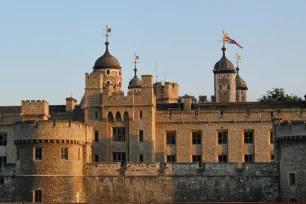
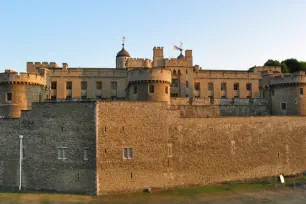
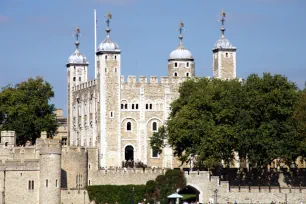
Construction of the Tower of London was initiated in 1070 by William the Conqueror, shortly after his victory at Hastings in 1066. The Tower was built to enforce the power of the Norman king over the newly conquered land.
The fortress, strategically located at the Thames, was originally not more than a temporary wooden building, which was replaced later by the White Tower. Over time, the complex was expanded into a stronghold with about twenty towers.
Today the Tower of London is best known for its Crown Jewels, but it used to be notorious for the many political opponents of the kings that were locked, tortured and killed in the Tower. The Tower was also a royal residence: several kings lived here, especially during turbulent times, when the donjon seemed a lot safer than the palace in Westminster.
White Tower
The oldest part of the fortress is the so-called White Tower, which was completed in 1097. This keep was long the tallest building in London at 27.4 meters (90ft). Its walls are 4.6 meter wide.
The tower was whitewashed during the reign of Henry III, which gave the tower’s facade its white appearance. Ever since, the tower has been known as White Tower. The building has four domed turrets at each corner. Three of them have a square shape, the other is round, due to its spiral staircase. The round turret was long used as an observatory.
Other Towers
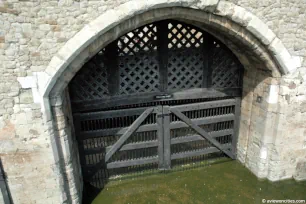
The Tower of London was significantly expanded in the thirteenth century, during the reign of Henry III, when two defensive walls were built around the White Tower. The inner wall had thirteen towers and the outer wall another six. The towers were mostly used to imprison political opponents.
Some of the most famous prisoners locked in the Tower were two princes, the sons of king Edward IV. After Edward’s dead in 1483 the children were locked in the Bloody Tower by their uncle, who would later ascend the throne as king Richard III. The princes were never seen again and were probably killed by guards. The St. Thomas Tower is located close to the Bloody Tower. Here, prisoners were brought into the fortress by boat through the Traitor’s gate.
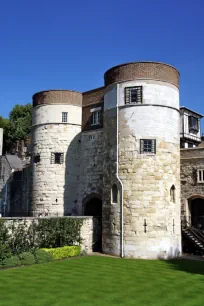
Important prisoners were often locked in the Beauchamp Tower, sometimes with their servants. An inscription on the wall of the tower is believed to refer to Lady Jane Grey, who, nine days after she was crowned Queen, was executed on Tower Green, an open terrain in the Tower of London.
Thomas More was imprisoned in the Bell Tower until his execution after he refused to accept king Henry VIII as head of the Anglican church. Even Queen Elisabeth I was confined here for some time.
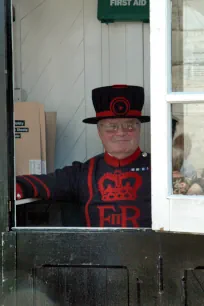
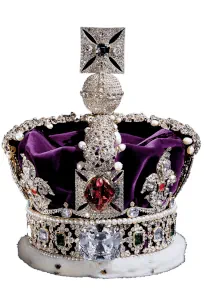
Yeoman Warders
The main entrance of the Tower of London is at the Byward Tower, where you’ll find the so-called Beefeaters or Yeoman Warders. Dressed in historic clothes, they not only guard the tower, but also give guided tours of the fortress. One of the about forty Yeoman Warders is known as the Ravenmaster, responsible for the ravens that have been living here for centuries.
Legend has it that the Tower and the kingdom will fall if the ravens leave. Hence, King Charles II placed the birds under royal protection and the wings of the ravens are clipped to prevent them from flying away.
Crown Jewels
The most famous tourist attraction in the Tower of London is the collection of Crown Jewels that has been on display here since the seventeenth century, during the reign of Charles II. Most of the jewels were created around the year 1660, when the monarchy was reinstalled. The majority of the older crown jewels were destroyed by Oliver Cromwell.
The jewels can be found in the Jewel House, which is part of the Waterloo Barracks, just north of the White Tower. Some of the highlights of the collection are the 530-carat First Star of Africa, which is set in the Scepter of the Cross; the Imperial State Crown with more than 2800 diamonds and the famous Koh-I-Noor, a 105-carat diamond.
More Sights
There’s plenty more to see in the Tower of London, such as the Royal Armories, which includes the personal armory of King Henry VIII, one of the world’s largest.
The medieval palace in the Tower of London is also open to visitors, and there are often reenactments of historic events in the fortress. For more information on the highlights of the Tower of London, check out their excellent and exhaustive website.

